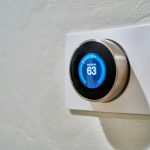Top 10 DIY Electronics Kits for Beginners: Expert Reviews and Top Picks
Connecting the Internet of Things (IoT)
Raspberry Pi kits play a significant role in creating IoT projects. These kits typically include WiFi adapters or have built-in WiFi capabilities, enabling them to connect to the internet easily. This connectivity allows Raspberry Pis to be used as servers or remote sensors in an IoT network.
With the help of various sensors and modules, users can monitor environmental conditions, control home appliances, or track movement. By coding projects using Python, beginners can build smart devices that communicate with each other, share data, or even be controlled remotely through web applications. The flexibility and power of the Raspberry Pi make it a preferred choice for aspiring IoT developers.
Educational Kits for Science and Engineering
Educational kits provide a hands-on approach to learning, allowing beginners to understand complex concepts in electronics and engineering through practical experiences.
Learning Electronics Through Kits
Learning electronics can be an engaging process with the use of kits. These kits often include a variety of components such as resistors, capacitors, LEDs, and integrated circuits. Snap Circuits, for instance, is a popular choice, offering a modular design that makes assembling circuits safe and straightforward.
Each kit comes with detailed instructions and project ideas that guide the user through building different electronic devices. This practical method of learning helps users grasp theoretical concepts effectively. Whether it’s constructing a basic radio or a simple alarm system, these kits foster an intuitive understanding of how electronic components work together in real-world applications.
Advancing into Robotics and Engineering
Once the fundamentals of electronics are understood, learners can transition into more advanced projects in robotics and engineering. Kits in this category provide components for building more complex systems, often integrating microcontrollers and programming elements.
For example, the Arduino Starter Kit introduces beginners to programming and hardware integration, enabling them to create automated systems and robots. These kits not only teach the principles of electronics but also software engineering and mechanical design. Through hands-on projects, learners can explore the interdisciplinary nature of robotics, bridging the gap between theoretical knowledge and practical application in engineering contexts.
Electronic Project Kits with Microcontrollers
Electronic project kits with microcontrollers provide beginners with foundational tools for developing hands-on experience in electronics. They typically include various components and programming interfaces, enabling users to build a wide range of projects.
Microkits and Project Creation
Many electronic project kits come with microcontrollers like Arduino or Raspberry Pi, which are the central units controlling various electronic components. These kits often feature a variety of resistors, capacitors, LEDs, and breadboards. Users can start by assembling simple circuits and gradually progress to more complex projects.
For example, the Arduino Starter Kit offers a multitude of components and detailed instructions for creating projects such as a light theremin or basic robotic cars. Kits like these help beginners understand basic principles of circuits and microcontroller programming without needing extensive prior knowledge.
Integrating Sensors and Programming
One crucial aspect of using microcontroller-based kits is integrating sensors. These sensors can detect environmental changes, such as light, temperature, and motion, making projects more interactive and functional. For instance, a common project might involve creating a temperature monitoring system using a microcontroller and a temperature sensor.
Programming these sensors into a project is typically done with languages like C++ (Arduino) or Python (Raspberry Pi). This allows beginners to write code, upload it to the microcontroller, and see their programmed responses in action. Progressing through various projects like these builds a deep understanding of both electronics and coding principles.



